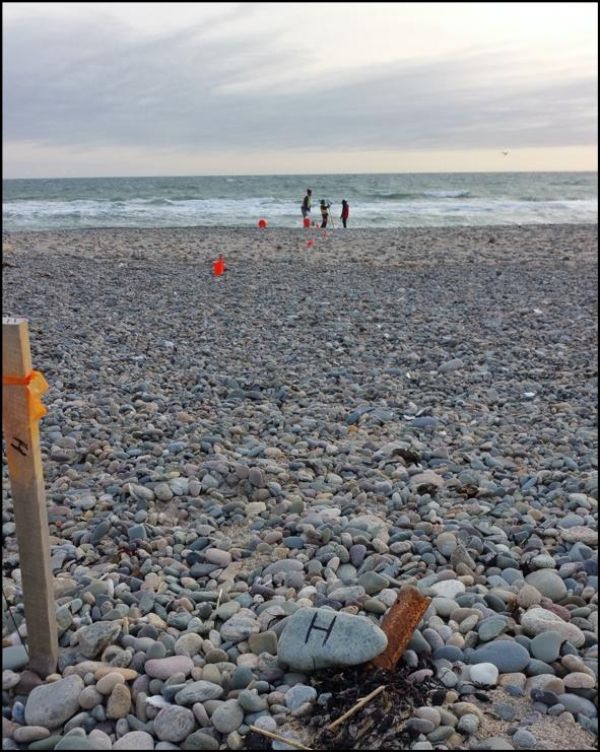Millions of Americans will visit New England’s beaches this summer to cool off, play in the waves and soak up the sun. Until now, the factors governing which beaches slope gradually to the sea and which ones end abruptly in a steep drop-off have been largely unknown. However, new research from the University of Massachusetts Amherst reveals, with unprecedented detail, how the grain size of beach sand relates to the slope of the beach itself. These new findings are critical to understanding how New England’s beaches will respond to both rising sea levels and increased storm activity.
Many of New England’s beaches are made up of a mixture of sand and small stones. Or, to be more precise, the grain sizes on these beaches are “bi-modal” – composed of very large pieces of gravel, from 10 to 64 millimeters, and medium-to-coarse sand, from .25 to 1 millimeter, but with very little in between.
“I challenge you to find a handful of grains from a New England beach that are about 5 millimeters (or just under one-quarter of an inch) in diameter,” says Jon Woodruff, a professor in UMass Amherst’s department of geosciences and lead author of a recently published paper in Marine Geology that details his team’s research. “There just aren’t many.”
It turns out the grain size is one of the crucial determinants of a beach’s slope, and researchers have long known that the finer the sand, the more gradually pitched the beach – up to a point. “The relationship between grain size and slope falls apart for coarser-grained beaches,” says Woodruff. Though many New England beaches are typically made up of coarse-grained particles, they still slope gradually to the water’s edge. Until now, no one knew why.
Read more at University of Massachusetts Amherst
Image: Woodruff's team making a transect of a rocky New England Beach. (Credit: Image courtesy Jon Woodruff)


